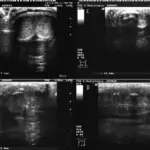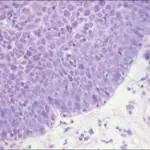Carcinoma in situ of the penis is an epithelial lesion of the penis where the cytologic deviations of malignancy are only confined to the penis epithelium, with no indication of distant metastases.
What is the Pathology of Carcinoma in Situ of The Penis?
The pathology of carcinoma in situ of the penis is:
-Etiology: The cause of carcinoma in situ of the penis includes HPV.
-Genes involved: Unknown.
-Pathogenesis: The sequence of events that lead to carcinoma in situ of the penis, trivial grazes on the prepuce or glans, progressively grow slowly edgewise along the surface, covering the full glans and prepuce, and finally invading the penile corpora and shaft.
-Morphology: The morphology associated with carcinoma in situ of the penis shows that it starts on the glans or else the inner prepuce surface close the coronal sulcus.
-Histology: The histology associated with carcinoma in situ of the penis shows the formation of keratinized, epithelial pearl, and degrees of mitotic action.
How does Carcinoma In Situ of The Penis Present?
Patients with carcinoma in situ of the penis are typically infrequent in circumcised males, present at an age range of 60 years and above. The symptoms, features, and clinical findings associated with carcinoma in situ of the penis include grazing that has failed to restore, delicate sclerosis of skin, minor carbuncle, papule, a boil, a wartlike growth, large exophytic growing, or inflamed glans.
How is Carcinoma In situ of The Penis Diagnosed?
Carcinoma in situ of the penis is diagnosed by physical examination and biopsy. Ultrasonography for local cancer staging, and CT scanning may be needed to assess retroperitoneal and pelvic lymph nodes.
How is Carcinoma In Situ of The Penis Treated?
Carcinoma in situ of the penis is treated through local excision.
What is the Prognosis of Carcinoma In Situ of The Penis?
The prognosis of carcinoma in situ of the penis is good with early diagnosis and treatment, the survival rate for a precise stage of penile cancer is about 65% in 5 years.



